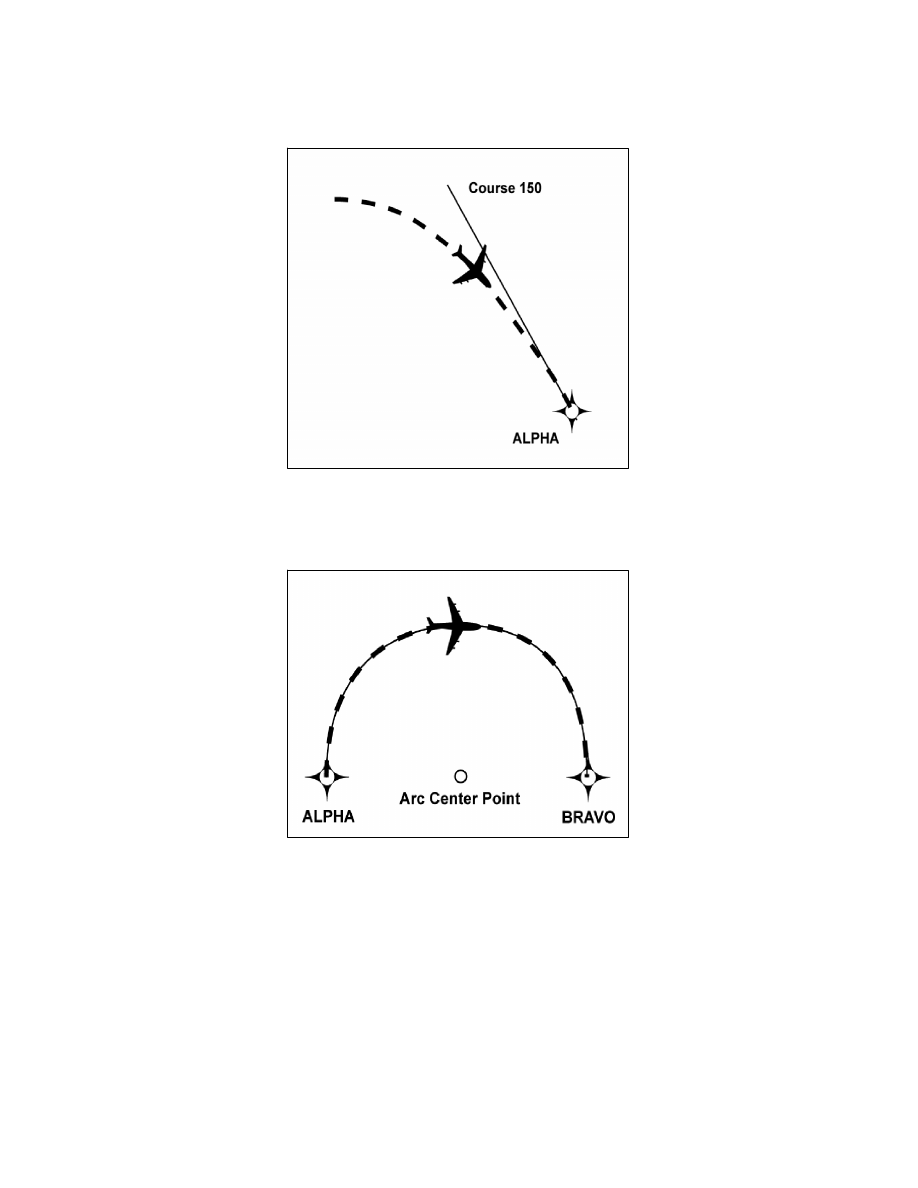
AIM
4/20/23
FIG 1
−
2
−
5
Course to Fix Leg Type
(4) Radius to Fix.
A Radius to Fix (RF) leg is defined as a constant radius circular path around a
defined turn center that terminates at a fix. See FIG 1
6.
FIG 1
−
2
−
6
Radius to Fix Leg Type
(5) Heading.
A Heading leg may be defined as, but not limited to, a Heading to Altitude (VA),
Heading to DME range (VD), and Heading to Manual Termination, i.e., Vector (VM).
Narrative:
“
climb
heading 350 to 1500”, “heading 265, at 9 DME west of PXR VORTAC, right turn heading 360”, “fly heading
090, expect radar vectors to DRYHT INT.”
(c) Navigation Issues.
Pilots should be aware of their navigation system inputs, alerts, and
annunciations in order to make better
−
informed decisions. In addition, the availability and suitability of
particular sensors/systems should be considered.
(1) GPS/WAAS.
Operators using TSO
−
C129(), TSO
−
C196(), TSO
−
C145() or TSO
−
C146() systems
should ensure departure and arrival airports are entered to ensure proper RAIM availability and CDI sensitivity.
(2) DME/DME.
Operators should be aware that DME/DME position updating is dependent on
navigation system logic and DME facility proximity, availability, geometry, and signal masking.
1
−
2
−
4
Performance
−
Based Navigation (PBN) and Area Navigation (RNAV)